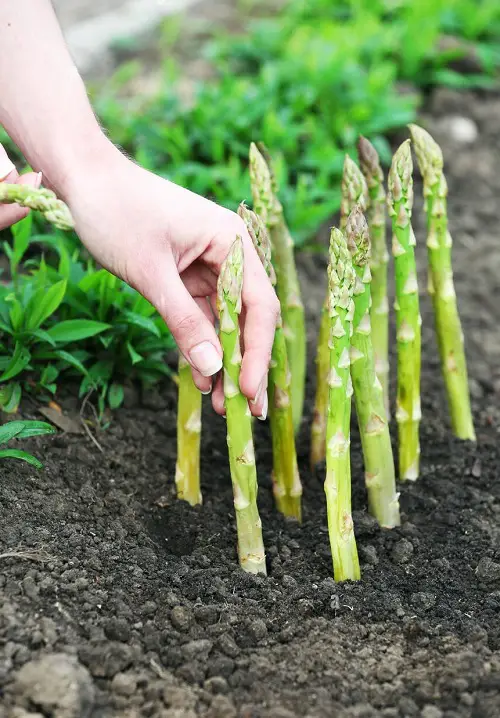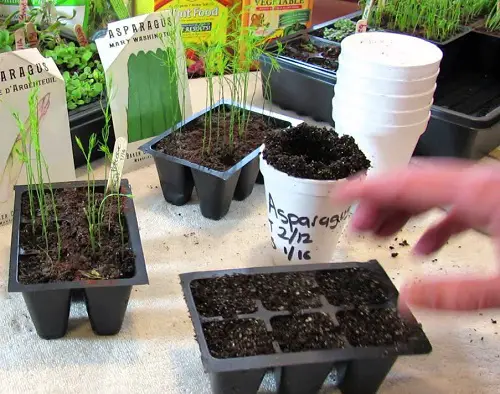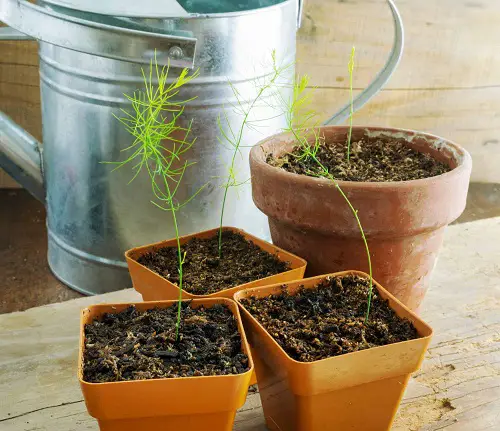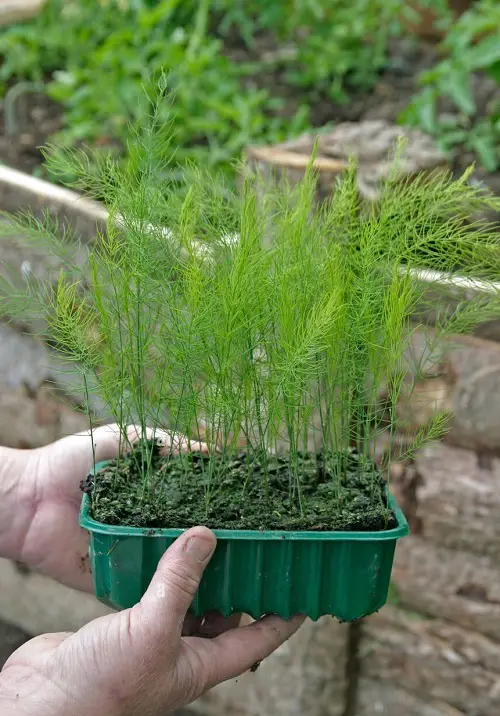Here’s a complete guide explaining Asparagus Growth Stages in detail along with tips on how to care for it!
Knowing about Asparagus Growth Stages will help you to understand the plant better, giving you insights on how to properly take care of it in order to get the best harvest.
Asparagus Growth Stages
Asparagus goes through several growth stages as it develops from a seed or crown into a mature plant. Understanding these growth stages is important for proper care, maintenance, and harvesting.
1. Germination
This is the initial stage of the asparagus growth stages when its seed begins to sprout. Germination typically takes place in a controlled environment, such as a seed tray or greenhouse.
During this stage, it is crucial to provide adequate moisture, warmth, and light for the seeds to germinate successfully. The importance of this stage lies in establishing healthy seedlings for future growth.
Here are Simple Seed Germination Tips To Grow Every Seed
2. Seedling Stage
Once the seeds have germinated, they grow into small seedlings with delicate stems and leaves. At this stage, the seedlings require consistent moisture, proper lighting, and protection from extreme temperatures.
The importance of this stage is to allow the seedlings to establish a strong root system and develop healthy foliage.
Here are Clever Things You Should Do When Plants are Young | Seedling Tricks
3. Fern Growth
The third asparagus growth stage is when it develops fern-like structures consisting of multiple branches with fine, feathery leaves. During this stage, the focus shifts to promoting robust foliage growth.
The ferns produce energy through photosynthesis, which is stored in the plant’s crowns for future growth. Adequate sunlight, water, and nutrients are crucial during this stage to ensure vigorous fern growth and sufficient energy storage.
Can Asparagus Fern Grow in Water? Find out here
4. Vegetative Growth
This stage marks the period when the asparagus plants focus on building a strong root system and crown development. The ferns provide nutrients to the roots, which promote crown development and store energy for future shoots.
It is important to provide proper soil conditions, including well-drained soil and adequate spacing, to support root and crown development.
5. Harvesting

This is that part of the asparagus growth stage when it gets ready to be picked. Begin harvesting spears when they reach 6-8 inches in height, cutting them just above the soil level. This typically occurs in the second or third year after planting. Harvesting involves cutting the young, tender shoots just above the soil level.
The importance of this stage is to enjoy the delicious and nutritious asparagus crop. Proper harvesting techniques, such as cutting at the right height and avoiding damage to the crown, help ensure the plant’s continued productivity.
6. Dormancy

This is the last of the asparagus growth stage, when it goes through a dormant period during the winter months. The ferns turn brown and dry up, indicating that the plants have entered a resting phase.
This stage allows the plant to conserve energy, strengthen the root system, and prepare for the next growing season. Proper winter protection measures, such as mulching, are important to protect the crowns during this dormant stage.
Find out some Fantastic Gardening Hacks here
Quick Care Tips for Asparagus
- Soil: Plant asparagus in well-draining soil with a pH of 6.0-7.0.
- Temperature: Asparagus thrives in cool to warm climates, ideally between 50-85°F (10-29°C).
- Water: Provide consistent moisture, aiming for 1-1.5 inches of water per week during the growing season.
- Sunlight: Plant asparagus in a location that receives full sun exposure for at least 6-8 hours per day.
- Fertilizer: Apply balanced fertilizer in early spring and after harvest, following label instructions. Use organic options rich in nitrogen.
- Mulch: Apply a layer of organic mulch around asparagus plants to suppress weeds, retain moisture, and regulate soil temperature.
- Weed Control: Regularly remove weeds to prevent competition for nutrients and water.
- Pest Management: Monitor for common pests like asparagus beetles and aphids, using organic pest control methods when necessary.
- Winter Care: Mulch asparagus crowns in late fall to protect them from freezing temperatures.
By following these quick care tips, you can ensure healthy asparagus growth and a bountiful harvest. Remember to adjust care practices based on your specific climate and local conditions.








Very helpful information and it helps me get ready for the up coming spring planning for my gardening! thank-you Tonya Ryan